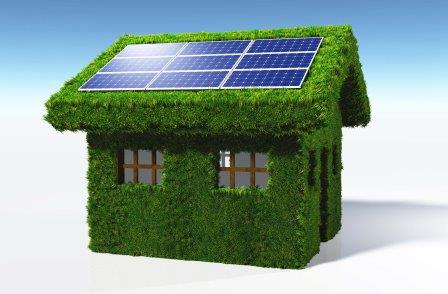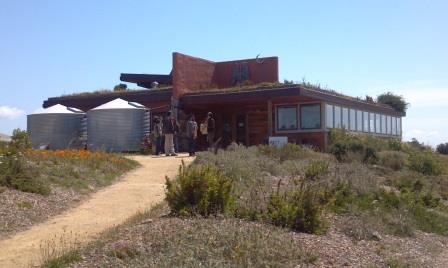

Printable PDF version
Subscribe to our newsletter
Living Building Challenge
Performance-Based Design
Financial PTSD
Construction
Management Specialists
111 Pine Street, Suite 1315
San Francisco, CA 94111
(415) 981-9430 (San Francisco office)
1663 Eureka Road
Roseville, CA 95661
(916) 742-1770 (Sacramento office)
9449 Balboa Avenue, Suite 270
San Diego, CA 92123
(619) 518-5648 (San Diego office)
8538 173rd Avenue NE
Redmond, WA 98052
(206) 571-0128 (Seattle office)
2063 Grant Road
Los Altos, CA 94024
(650) 386-1728 (South Bay office)
9705 Cymbal Drive
Vienna, VA 22182
(703) 268-0852 (Washington, DC office)
www.TBDconsultants.com
LEED has taken us on an incremental path towards building green, increasing the standard to be achieved as technology and construction practices have improved. The Living Building Challenge has taken the opposite path, setting the bar at a height that few, if any, could meet, but then being willing to make allowances where technology and location make it necessary to do so. Launched in 2006, it is currently at version 3, and it requires confirmation that the building is performing up to the goals when in use, not just theoretically being capable of doing so.

The goal that the Living Building Challenge is aiming for is that of having buildings that supply all their own power and water, while utilizing renewable resources and being good looking, pleasant places to live and/or work. It does this through seven ‘Petals’ or performance categories, specifically Place, Water, Energy, Health & Happiness, Material, Equity, and Beauty, which are in turn subdivided into a total of twenty Imperatives. All of the Imperatives are mandatory, but temporary exceptions acknowledge the fact that legal restriction, technology development, or other impediments may mean that full compliance cannot be achieved. Some of the requirements vary, based on what type of location the building is situated in. Scale Jumping, or collaboration between adjacent buildings or sites to achieve a goal, is also accommodated.
Place: This includes the Imperatives 01) Limits to Growth, 02) Urban Architecture, 03) Habitat Exchange, and 04) Human Powered Living. This Petal basically aims at protecting the natural environment while enabling healthy communities in which to live and work.
Water: This includes the Imperative 05) Net Positive Water. The goal of this Petal is to provide all the building’s water needs from collected rainwater and recycled waste water, while acknowledging that regulatory restrictions, among other things, may not allow that at present.
Energy: This includes the Imperative 06) Net Positive Energy. On-site, non-polluting, renewable energy sources are to be available to meet up to 105% of the building’s annual energy needs, and on-site energy storage is also to be included.

Health & Happiness: This includes the Imperatives 07) Civilized Environment, 08) Healthy Interior Environment, and 09) Biophilic Environment. This Petal is intended to ensure that the building creates a healthy environment, and includes such things as operable windows, protecting the air quality, and incorporating nature and natural patterns into the design.
Material: This includes the Imperatives 10) Red List, 11) Embodied Carbon Footprint, 12) Responsible Industry, 13) Living Economy Sourcing, and 14) Net Positive Waste. The intent of this Petal is to move construction towards the use of totally renewable and non-polluting materials by prohibiting the use of known toxic materials, using local resources where possible, compensating for the carbon impact resulting from the construction, and planning for the eventual recycling of materials.
Equity: This includes the Imperatives 15) Human Scale + Humane Places, 16) Universal Access to Nature & Places, 17) Equitable Investment, and 18) Just Organizations. Here the aim is to ensure that the building does not impinge on the rights of others, by damaging air quality, blocking views, obstructing access to natural resources, or other means, and that it promotes culture and human interaction.
Beauty: This includes the Imperatives 19) Beauty + Spirit, and 20) Inspiration + Education. While acknowledging that ‘beauty is in the eye of the beholder’, this Petal aims at promoting beauty in design, and to make the built environment uplifting for its users. It also promotes using the development to educate and inspire others about making buildings eco-friendly.
The requirements above are for the full Living Building Certification. It is also possible to get a Petal Certification if you can meet the requirements of three of the petals (which must include Water, Energy, or Material as one of them) along with achieving Imperatives 01 and 20. Net Zero Energy Certification requires achievement of Imperatives 01, 06, 19, and 20, but the requirement for 06 (Net Positive Energy) is reduced to 100% from 105%.
In this article we look at what Performance-Based Design is, how it is carried out, and how it can benefit a project.
With domestic consumption being such a major player in the US economy, we look at why consumer confidence isn't recovering faster after the recession and the effects that is having on the recovery.
Design consultant: Katie Levine of Vallance, Inc.